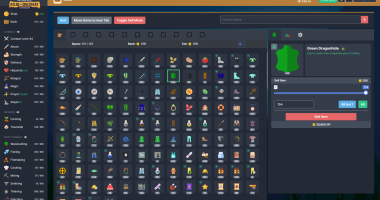A HUGE explosion on the sun last Tuesday could have been ‘catastrophic’ for Earth’s power grid, experts have warned.
One of the largest coronal mass ejections (CME) in recent years was recorded on the far side of the sun last week, according to the European Space Agency.
The ESA’s Solar Orbiter spacecraft caught the gigantic solar flare’s prominence on camera – although the actual eruption was not in view.
The ESA said this was the “largest solar eruption ever observed in a single image together with the full solar disk.”
Coronal mass ejections happen when accelerated charged particles (mainly electrons) collide with the plasma medium.
And while CMEs cannot travel far enough to harm humans on Earth, the electromagnetic radiation and energetic particles can “temporarily alter the upper atmosphere creating disruptions with signal transmission,” NASA officials said in a statement.
In fact, had Tuesday’s solar storm, which was estimated to be 400,000 kilometers wide, been pointed towards Earth, it could have caused a worldwide aurora effect leading to many types of digital disruptions.
“It very easily could have knocked out some of the satellites, the power grid, cell phones – the list goes down,” Jim Todd, the Director of Space Science Education at the Oregon Museum of Science and Industry told WFLA.
Most read in Tech
Todd added that Tuesday’s event likely possessed similarities to the 1859 Carrington Event, which was the most intense geomagnetic storm in recorded history.
That storm was so intense, that its strong auroral displays around the world caused sparking and fire in several telegraph systems.
When comparing the consequences of both events, Todd said that “we would be more vulnerable now, with all the digital technology that we have come to love and use.”
And despite Earth dodging the bullet on Tuesday, Todd added that we are heading into a period of increased solar activity, and more solar flares are likely on the way.
“We’re going from a solar minimum into our solar maximum. In 2022, the sunspot counts have gone way up, and in 2020 and 2019 the sun was very quiet, with little activity,” Todd stated.
Thankfully, this type of activity is monitored around the clock by observatories worldwide to hopefully prevent serious damage.
“This is a huge storm. Does it surprise us? No. But there is always the question of ‘what comes next?’” Todd said.
“All these observatories are monitoring the sun for us and they’re doing a great job. We’re learning from it. Hopefully, we’ll be ready,” he added
In other news, the creators of a chilling new horror game say that the title is so disturbing they’ve been forced to censor it on PlayStation.
Apple has announced updates to AirTags following claims that the coin-sized tracking devices are being used to stalk people.
And TikTok has announced new rules, banning users who deadname or misgender others.
We pay for your stories!
Do you have a story for The US Sun team?










